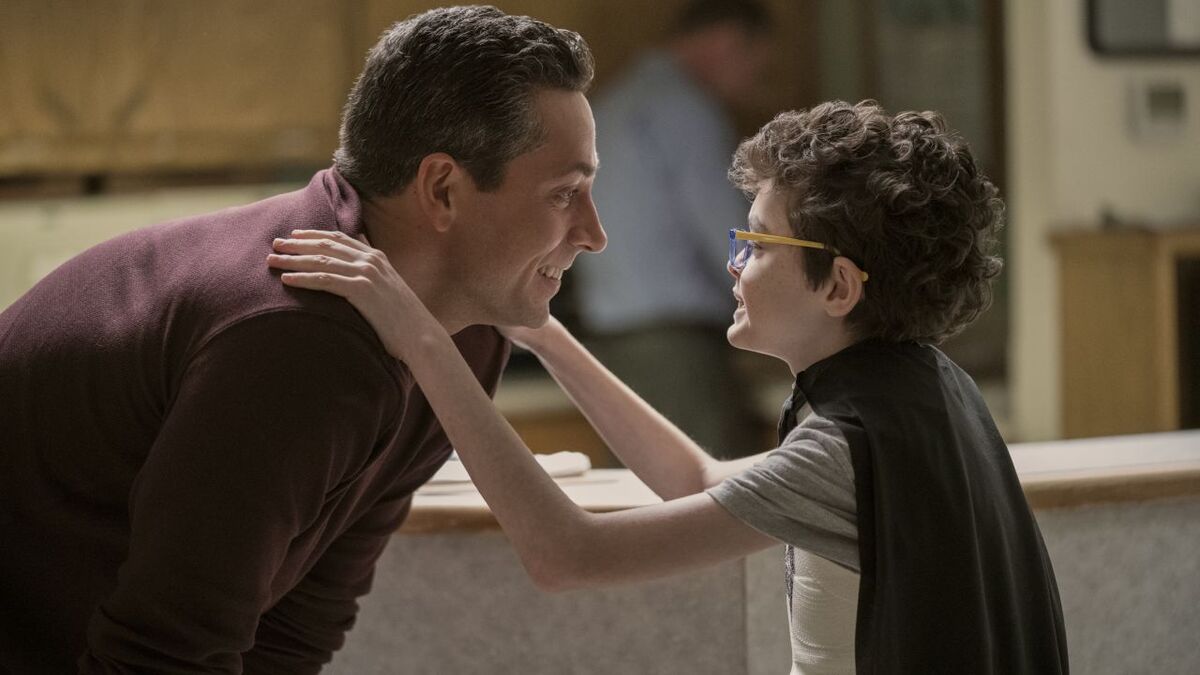What’s the difference between belief and faith? You can pass off the question as being a matter of semantics, but seeing as Paige, the last well-adjusted person on The Americans, thinks it’s a distinction worth making, perhaps so should we. Maybe it’s simply a matter of knowns versus unknowns. For example: I believe that “Born Again” broadcasts important character details through costuming, as evidenced by recurring colour motifs. I have faith that this was the intention of the show’s creators, and that you, the reader, will be willing to go down this red, white, blue, and pink rabbit hole with me.
Ideological beliefs are the largest spawning pool for drama on The Americans, as is the case in life. Where and how you live is often a byproduct of value sets that you, and your ancestors chose to subscribe to. But those beliefs are often derived from faith, which is a harder substance to quantify. Philip and Elizabeth believe that Western capitalism is a pox upon the world, in part because they have faith that communism will provide humanity a superior form of government.
In an hour that’s as surprisingly funny as “Born Again” is (in addition to being the usual emotional shiatsu The Americans likes to put us through), the biggest joke might be that Philip and Elizabeth’s faith often runs counter to how they act on their beliefs. Paige, looking beatific and sanctified in white as she prepares for baptism, is praised for her commitment to the church’s political actions. By writing letters, protesting, and making their voices heard as a whole, the church embodies a kind of cohesive unity that Godless communism is meant to aspire to.
Ironically, Philip and Elizabeth’s own form of disobedience against the Reagan administration embodies the drive and self-direction its guiding principles are founded on. The Jennings operate under their own form of manifest destiny, where you can harm, exploit, kill or sleep with whoever you want, so long as you’re moving the agenda of the Greater Good forward. That agenda may not be self-interested, but their entire existence as undercover saboteurs is based on a belief that real power is taken and wielded by the individual wolves, not a collective flock.
To keep this conversation from devolving into a question-barrage the likes of which only Henry is capable of, maybe it’s best to just say that everyone has faith in something, but the beliefs channeling that faith are mutable. For most people, that faith is placed in country, God, family, or love. Without those options, faith in one’s own willingness to survive presents a dark and desperate alternative. Nina, having been robbed of so much, uses Evi’s faith in her boyfriend against her. Nina believes she needs freedom more than a friend. The scene where she and Evi trade stares before the latter is dragged off is gut-wrenching, ending on the haunting image of Nina aligned with that omnipresent crack in the wall. In her isolation, Nina has become more assured than anyone of what she believes, and that’s looking out for herself.
For everyone else on The Americans, living in a melting pot means bumping up against people with values that challenge your own. Dinner at the Jennings brings together a devout ESTafarian (hi, Tori!), a dabbling one in Stan, a hardline communist posing as a housewife, a waffling communist who loves country music, a born again teenager, and a Henry. The lot of them form a rainbow of different opinions on how the world does and should work, but as the intrusiveness of Henry’s questions illustrates, to openly discuss those differences isn’t polite.
Also like life, a person’s belief and faith are rarely expressed directly on The Americans. It’s why the costuming means so much in “Born Again,” and why Elizabeth’s belief that now is the time to open up to her daughter has everything to do with what Paige is wearing in that final scene. Colour theory is a sticky wicket, because anything can mean just about anything when you want it to. But looking at Paige’s ensemble in that last scene, you see the four colours that dominate the hour not just in frequency, but connection to the greater themes of Season 3 that have brought her to this moment.










Published: Mar 4, 2015 11:00 pm